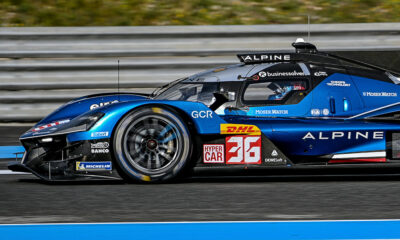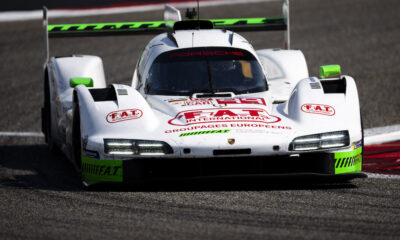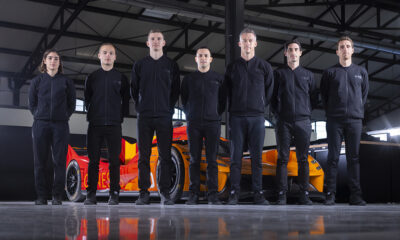
Photo: James Moy/Toyota
Toyota Gazoo Racing will start the FIA World Endurance Championship season in low-downforce configuration, having confirmed the use of its Le Mans-based aero package for the Six Hours of Spa.
The Japanese manufacturer, which recently revealed details of its 2018-spec Toyota TS050 Hybrid, has rolled out a “slightly updated” low downforce aero kit, according to technical director Pascal Vasselon.
Both the low and standard high-downforce packages will be used in this weekend’s Prologue at Paul Ricard, with the No. 7 car to run the updated kit and the No. 8 car in “essentially” the same aero configuration as last year’s season-ending round in Bahrain.
The No. 7 car, meanwhile, is registered for the 30-hour endurance test with all five of its drivers registered for the two-day pre-season test.
Toyota, which fielded three cars at Spa and the 24 Hours of Le Mans in 2017, took a split aero approach in the Belgian round last year.
“Last year we had one low downforce car and two high downforce,” Vasselon said. “The low downforce car made the fastest lap time.
“Clearly we’ve seen that last year that the low downforce car is not stupid and it’s a good preparation for Le Mans for the drivers to get used to low downforce, as well to finalize the validation of the bodywork.
“Definitely, we will go with low downforce in Spa.”
Toyota is set to take a similar approach to Porsche from last year in waiting to homologate its high downforce kit until post-Le Mans, with Vasselon admitting the standard package is “not yet” updated.
Vasselon, however, is insistent that the low downforce package will be competitive at Spa, despite LMP1 privateer squads permitted to homologate an unlimited number of aero evolutions throughout the season.
As was the case last year, LMP1 factory entries are still limited to two different kits.
“Anything can happen but the low downforce car is not slow at Spa,” Vasselon said. “Last year, what we found out during the race was that the pace will be very similar.”
LMP1 Equivalence to Play Out at Prologue
Vasselon said he’s eager to see how the recently issued Equivalence of Technology plays out this weekend, in the first public test between the updated Toyota and the wave of new non-hybrid LMP1 cars.
While still running to separate technical regulations, non-hybrids have been given increased performance and fuel allocations in an effort to close the performance gap to the Toyotas.
“We’re looking forward to this first test session,” Vasselon said. “They have a bit more fuel… It’s 69 percent more!
“It’s our challenge, basically. Our answer to that is our hybrid system.
“It’s a nice challenge to see if an efficient usage of the energy available we can match the pace of people who have 69 percent more fuel around the lap. It’s somewhat interesting.”
Unlike previous seasons, which saw only one permitted change, occurring after Le Mans, Vasselon indicated the EoT could change prior to next month’s season-opener as well as in the run-up to the French endurance classic.
























